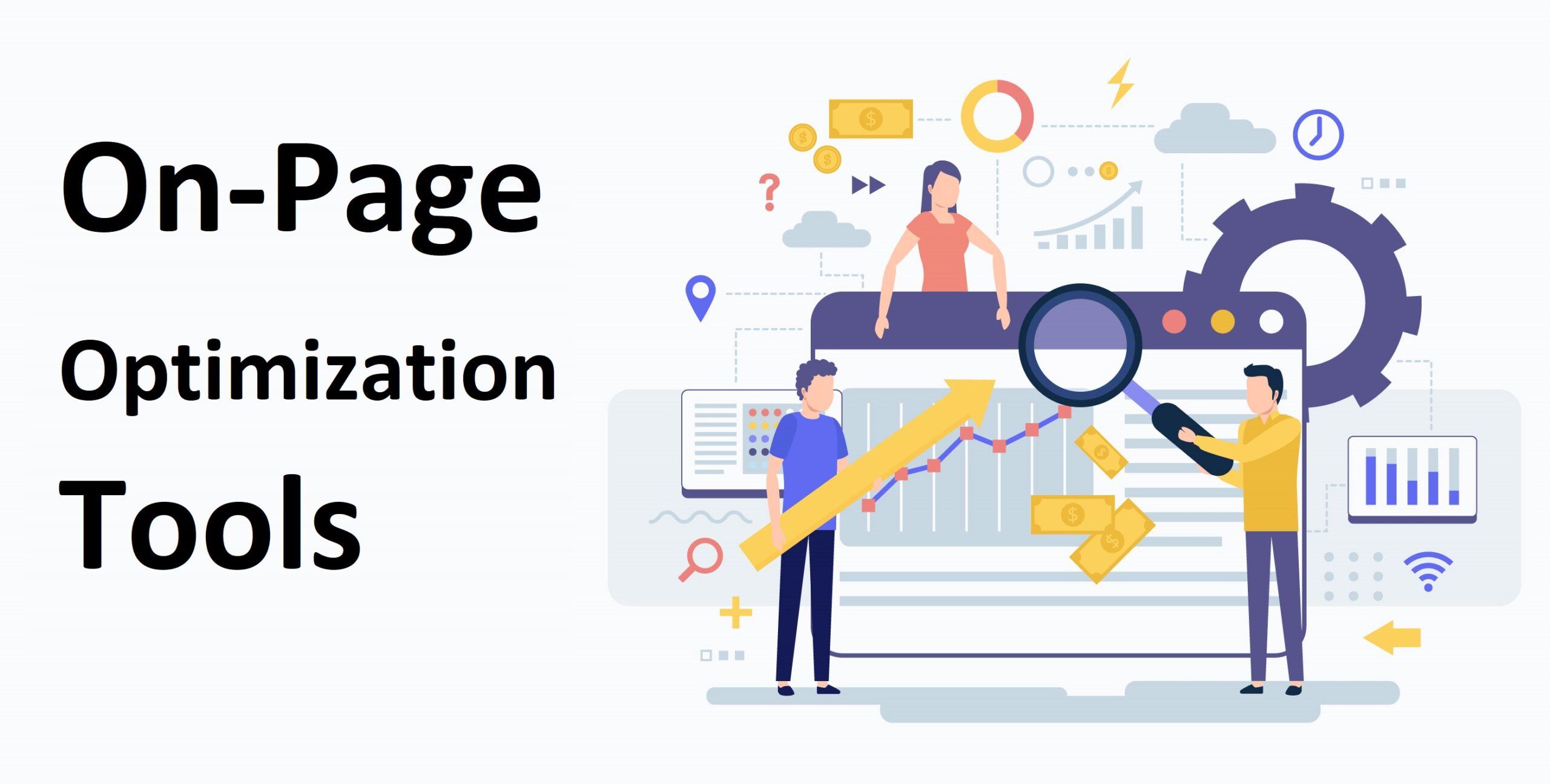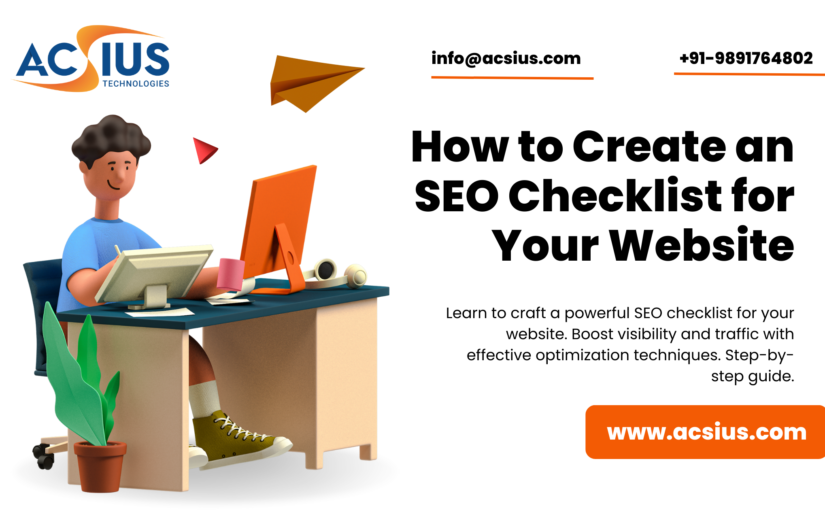In today’s digital landscape, having a strong online presence is essential for businesses and individuals alike. Whether you run an e-commerce store, a blog, or a professional website, getting noticed by potential visitors and customers is the key to success. This is where Search Engine Optimization (SEO) comes into play. Creating an SEO checklist for your website is a systematic approach that can significantly improve your website’s visibility, organic traffic, and overall performance in search engine rankings.
Understanding SEO and Its Importance
SEO refers to a set of strategies and techniques designed to enhance a website’s visibility on search engine results pages (SERPs). When users search for information or services related to your website, you want to ensure that your site appears prominently in the search results. This is because higher rankings lead to more clicks, which, in turn, can generate more leads, sales, and conversions for your business.
The importance of SEO cannot be overstated in today’s competitive online world. With millions of websites vying for attention, having an effective SEO strategy is the key to standing out from the crowd and reaching your target audience.
1. Keyword Research and Analysis

Keyword research is the foundation of any successful SEO campaign. It involves identifying the specific keywords and phrases that your target audience is using to search for information or products related to your niche. By targeting the right keywords, you can attract highly relevant traffic to your website.
Identifying Relevant Keywords
Start by brainstorming a list of potential keywords that are relevant to your business or content. Put yourself in the shoes of your potential customers and think about what terms they would use when searching for what you offer. You can also use keyword research tools like Google Keyword Planner, SEMrush, or Moz’s Keyword Explorer to discover additional keywords and get valuable insights into their search volumes and competition levels.
Analyzing Keyword Competition
Once you have a list of keywords, it’s crucial to assess their competition level. Highly competitive keywords may be challenging to rank for, especially if your website is relatively new or lacks authority. Instead, consider focusing on long-tail keywords, which are longer and more specific phrases that have lower search volumes but also lower competition. Long-tail keywords can be highly valuable as they often indicate stronger user intent and higher conversion potential.
2. On-Page Optimization

On-page optimization involves optimizing individual web pages on your site to make them more search-engine-friendly. This process ensures that search engines can easily crawl, index, and understand your content, leading to better rankings.
Compelling Title Tags and Meta Descriptions
Title tags and meta descriptions are HTML elements that provide concise summaries of a webpage’s content. They appear in search engine results and act as the first impression for potential visitors. Craft compelling and relevant title tags and meta descriptions that include your target keywords and encourage users to click through to your site.
URL Structure
A well-structured URL is both user-friendly and SEO-friendly. Keep your URLs short, descriptive, and keyword-rich, reflecting the content of the page. Avoid using unnecessary characters or numbers, as clean URLs are easier for both users and search engines to understand.
Headings (H1, H2, H3, H4)
Headings play a crucial role in organizing your content and signaling its structure to search engines. The H1 tag should represent the main title of the page, while H2, H3, and H4 tags can be used for subheadings and subsections. Properly using headings helps search engines better comprehend the context and hierarchy of your content.
Engaging and High-Quality Content
Content is the backbone of any successful website. Create informative, valuable, and engaging content that resonates with your target audience. High-quality content not only keeps visitors on your site longer but also increases the likelihood of attracting valuable backlinks from other reputable websites.
Keyword Placement
Strategically place your target keywords throughout your content. However, avoid keyword stuffing, which is the practice of overusing keywords unnaturally. Instead, focus on creating content that reads naturally and provides value to your readers.
Image Optimization
Optimize your images to improve page loading times and user experience. Compress images without compromising quality, and use descriptive alt text to provide context to search engines, as they can’t “see” images the way humans do.
Internal Linking
Include internal links within your content to connect related pages on your website. Internal linking helps search engines understand the relationship between different pages and distributes link authority throughout your site.
3. Mobile Optimization

Mobile optimization refers to the process of adapting and optimizing a website to provide an optimal user experience on mobile devices such as smartphones and tablets. With the increasing number of people accessing the internet through mobile devices, mobile optimization has become a critical aspect of web development and SEO.
Mobile optimization involves several key factors, including:
Responsive Design:
Creating a responsive website that automatically adjusts its layout and content to fit different screen sizes and resolutions. This ensures that the site is easily accessible and navigable on various mobile devices.
Mobile-Friendly Navigation:
Simplifying the navigation menu and using mobile-friendly icons or buttons to make it easier for users to find and access content on smaller screens.
Fast Loading Times:
Optimizing images, code, and server responses to ensure fast loading times on mobile devices. Slow-loading pages can lead to higher bounce rates and decreased user satisfaction.
Readability and Font Size:
Using legible fonts and appropriate font sizes to enhance readability on smaller screens. Avoiding small text that may be difficult to read on mobile devices.
Touch-Friendly Elements:
Designing buttons, links, and interactive elements with adequate spacing to accommodate touch inputs accurately.
Avoiding Flash:
Flash content is not supported on many mobile devices, so avoiding it in favor of HTML5 or other mobile-friendly technologies.
Testing on Multiple Devices:
Testing the website on various mobile devices and using tools like Google’s Mobile-Friendly Test to identify and fix any issues.
By implementing mobile optimization techniques, you can provide a seamless and user-friendly experience for mobile users, which can lead to increased engagement, better search engine rankings, and ultimately, more conversions and success for your website.
4. Page Speed and Loading Time
Page speed is a crucial factor in both user experience and SEO. A fast-loading website provides a positive experience for visitors and can lead to better search engine rankings. Regularly monitor and optimize your site’s loading time by compressing images, leveraging browser caching, and minimizing server response times.
5. Technical SEO

Technical SEO refers to the optimization of the technical aspects of a website to improve its visibility and performance in search engines. It involves various behind-the-scenes tasks that ensure search engines can crawl, index, and understand your site efficiently.
Technical SEO covers elements such as creating an XML sitemap, optimizing robots.txt to control search engine crawlers, implementing canonical tags to address duplicate content issues, and handling 404 error pages to enhance user experience.
Additionally, technical SEO includes aspects like website speed optimization, mobile-friendliness, SSL certificates for secure connections, and structured data markup for better search engine understanding.
By focusing on technical SEO, you can ensure that your website is search-engine-friendly, leading to improved rankings and better user experiences for your visitors.
XML Sitemap
A sitemap is a file that lists all the pages on your website, helping search engines crawl and index your content more efficiently. Submit your XML sitemap to search engines like Google to ensure they can discover and index all your important pages.
Robots.txt
The robots.txt file is a text file that instructs search engine bots on which pages to crawl and which ones to avoid. Use it to prevent search engines from crawling sensitive or duplicate content.
Canonical Tags
Canonical tags indicate the preferred version of a page when you have multiple pages with similar content. Using canonical tags helps avoid duplicate content issues and consolidates link authority to the desired version.
404 Error Handling
Customize your 404 error page to guide visitors back to relevant content when they encounter broken links or missing pages. This improves user experience and reduces bounce rates.
SSL Certificate
An SSL certificate encrypts data transmitted between your website and its users, providing a secure browsing experience. Search engines consider SSL encryption as a positive ranking factor.
6. User Experience and Site Architecture

A positive user experience is crucial for SEO success. An intuitive and user-friendly website encourages visitors to stay longer and engage with your content, indicating to search engines that your site is valuable to users.
Clear Navigation
Ensure that your website’s navigation is clear and intuitive. Users should be able to find what they’re looking for easily, with minimal effort.
Responsive Design
With the majority of internet users accessing websites from mobile devices, responsive design is a must. Your website should automatically adapt to different screen sizes and resolutions.
Readability and Font
Use legible fonts and maintain proper formatting to improve content readability. Avoid using fonts that are too small or difficult to read.
Call-to-Action (CTA) Buttons
Strategically place clear and compelling Call-to-Action (CTA) buttons throughout your site to guide users to take desired actions, such as signing up for a newsletter or making a purchase.
Contact and About Pages
Include dedicated “Contact Us” and “About Us” pages to build trust with your audience. These pages provide essential information about your business and help establish credibility.
7. Off-Page SEO

Off-Page SEO refers to the strategies and techniques used outside of your website to improve its online presence and reputation. This includes activities such as building quality backlinks, guest blogging, social media marketing, and online reputation management. Off-Page SEO is crucial for increasing your website’s authority, credibility, and search engine rankings. By engaging in off-page optimization, you can enhance your website’s visibility, attract relevant traffic, and ultimately achieve better overall performance in search engine results.
Backlink Building
Earning high-quality backlinks from authoritative websites is a crucial aspect of off-page SEO. Search engines view backlinks as votes of confidence in your content, which can positively impact your rankings.
Guest Blogging
Guest blogging on relevant and reputable websites allows you to showcase your expertise, reach a wider audience, and earn valuable backlinks to your site.
Social Media Marketing
Engaging with your audience on social media platforms not only helps with brand awareness but also drives traffic to your website. Share valuable content, interact with followers, and encourage social sharing of your posts.
9. Monitoring and Analytics
Regularly monitoring your website’s performance is essential to track the effectiveness of your SEO efforts and make data-driven improvements.
Google Analytics
Set up Google Analytics to track essential metrics, such as website traffic, user behavior, and conversion rates. Analyzing these data helps identify which strategies are working and which areas need improvement.
Search Console
Google Search Console provides valuable insights into how your website appears in search results. Use it to monitor indexing status, detect issues, and submit sitemaps.
10. Local SEO

If your business has a physical location or serves specific geographical areas, local SEO is crucial for attracting relevant customers.
Google My Business
Claim and optimize your Google My Business listing to appear in local search results and provide essential information to potential customers, such as your address, contact details, and business hours.
Local Citations
Consistency is key when it comes to local citations. Ensure that your business name, address, and phone number are accurate and consistent across various online directories and platforms.
Customer Reviews
Encourage satisfied customers to leave positive reviews on platforms like Google, Yelp, or industry-specific review sites. Positive reviews can improve your local search rankings and build trust with potential customers.
11. SEO Updates and Algorithm Changes
Search engines frequently update their algorithms to deliver more relevant and accurate search results. Staying informed about these updates is crucial to adapt your SEO strategy accordingly.
Conclusion
Creating an SEO checklist for your website is a continuous process that requires dedication and monitoring. By following the outlined steps, you can effectively optimize your website for search engines, attract organic traffic, and achieve better rankings. Remember that SEO is an ongoing journey, and staying updated with the latest trends and best practices will ensure your website remains competitive in the ever-evolving digital landscape.
FAQs About How to Create an SEO Checklist
What is SEO, and why is it essential for my website?
SEO, or Search Engine Optimization, refers to the process of optimizing your website to improve its visibility and ranking on search engine results pages. It is essential because higher rankings lead to increased visibility and organic traffic, which can drive more leads and conversions for your business.
How do I perform keyword research for my website?
Keyword research involves identifying the keywords and phrases that your target audience is using to search for information related to your niche. Use keyword research tools like Google Keyword Planner, SEMrush, or Moz’s Keyword Explorer to discover relevant keywords and assess their search volumes and competition levels.
What are long-tail keywords, and why are they essential for SEO?
Long-tail keywords are longer and more specific phrases that users use in their search queries. While they may have lower search volumes, they often indicate stronger user intent and higher conversion potential. Targeting long-tail keywords can help you reach a more specific and motivated audience.
How can I ensure that my website is mobile-friendly?
To ensure your website is mobile-friendly, use a responsive design that automatically adjusts to different screen sizes and resolutions. Test your site on various mobile devices to ensure it looks and functions correctly on smartphones and tablets.
What is the significance of backlinks for SEO?
Backlinks are links from other websites that point to your site. Search engines consider backlinks as votes of confidence in your content. Earning high-quality backlinks from authoritative websites can boost your website’s credibility and improve its search engine rankings.






